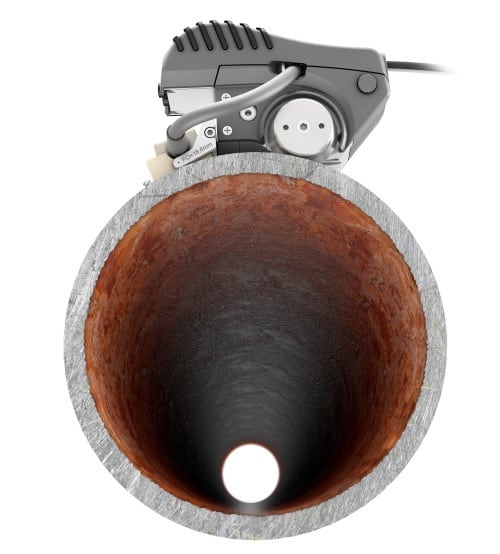NDT for Corrosion Detection: What You Need to Know

Corrosion is a problem that affects almost every major industry. It can cause costly repair requirements and safety hazards. What’s needed is a viable nondestructive testing (NDT) regimen that detects corrosive anomalies within a shorter timeframe and adapts to complicated contours.
When it comes to NDT for corrosion detection, choose an ultrasonic testing solution including a scanner or an eddy current array solution including an instrument and flexible probe. Both techniques offer the portability that technicians need in the field, with the addition of quality signal probing measures that can pierce through thicker components.
UT for Corrosion Detection
Phased Array Ultrasonic Testing (PAUT) instruments come in many forms and capabilities, but a valuable tool as part of the solution to deal with inspecting for corrosion is a paintbrush scanner. A scanner of this magnitude can adjust to a variety of complex shapes and surface levels that other NDT devices cannot handle, helping analysts find corrosive spots that hide under unconventional surfaces.
Example: A paintbrush scanner can cover curved or flat surfaces with ease due to its encoded wheel system that tracks the scanning position live and highlights unscanned areas. Additionally, uncovered areas are highlighted on-screen for the analyst to see.
Conventional X-Y mapping systems paint a limited rendition of the surface area, especially curved surfaces. The two-axis schematic fails to provide a full picture of the surface, so comprehensive coverage is unattainable and technicians may overlook corrosive sections. The other alternative is a wheel probe scanner, which tests flat and curved surfaces, but it cannot read the second axis and can cause maladjustments during the probing process.
On the other hand, a paintbrush scanner does away with limited X-Y mapping and misalignment issues that can produce faulty data and lead maintenance departments astray.
An NDT paintbrush scanner works well for the following types of aberrations:
- Erosion
- Pitting
- Corrosion
Additionally, UT scanners can detect wall thickness variations stemming from corrosive deviations, giving technicians the ability to detect problematic wall sections before they cause larger issues. When paired with the right software, the 3D aspect fosters identifiable plots of the corrosion, providing an easier view of the weakest areas of the component.
Eddy Current Testing for Corrosion Detection
An eddy current array (ECA) testing method is well suited for multilayer corrosion inspections usually performed in aerospace. An ECA instrument also provides similar quality detection schemes as UT instruments and some advanced products have a signal capability that offers up to 25 percent greater detection capabilities in the eddy current field. The right ECA instrument can reach corrosive areas that other NDT instruments cannot handle.
Example: A prime ECA instrument can penetrate through multi-layered sections of an airframe in search of corrosive indications. The signal-to-noise ratio can help an analyst pinpoint the slightest deviations or material losses deriving from corrosion, in addition to abnormal thickness changes.
Some noteworthy features of an ECA instrument that can assist with corrosion detection include:
- Battery-operated, with up to 10 hours of prime operation.
- A touch-screen interface that’s accessible and easy to use.
- Handheld portability that allows technicians to commence inspections without excessive arm fatigue.
In addition, ECA is a more advanced technique in eddy current technology, offering detailed findings of corrosion and other irregularities in the form of cracking. The most flexible ECA probes can provide a variety of coil sets that can conform to many geometries and materials, and the coil sets are interchangeable. In general, when an ECA instrument is paired with ECA probing techniques, technicians can reduce inspections by as much as 95 percent compared to certain traditional ECT means. Therefore, users can finish in less time and achieve more comprehensive data.
NDT for Corrosion Detection with UT and ECT
PAUT and ECA are among the best methods in the NDT industry to find more corrosion with less hassle. Both techniques provide handheld instrumentation that permits a full testing procedure without the need for bulky equipment or third-party software.
NDT for corrosion detection must also include an enhanced software system that provides powerful tools to simplify setup, acquisition, analysis and reporting, allowing for a more thorough investigation. Both methods surpass other NDT techniques, especially when ECA and PAUT instruments are made by a reputable NDT manufacturer that devotes time and resources to the latest technologies. The right equipment can detect corrosion in less time, giving maintenance crews and companies additional time to engage in preventative repairs that avert hazards and shutdowns.
Zetec is a major provider of UT and ECT equipment to detect all types of corrosive deviations. Contact us today to learn more about our UT and ECT techniques, including a tailored inspection plan designed for your NDT needs.
